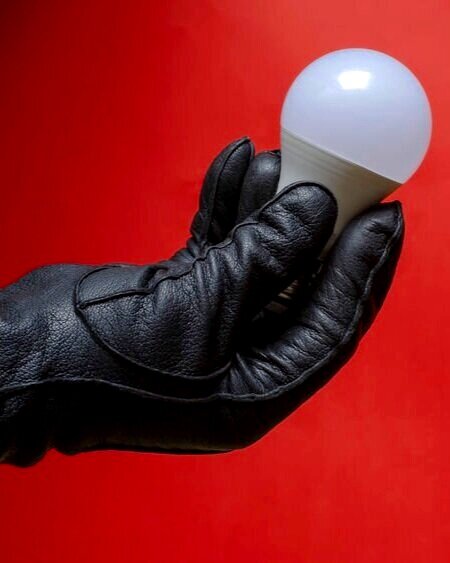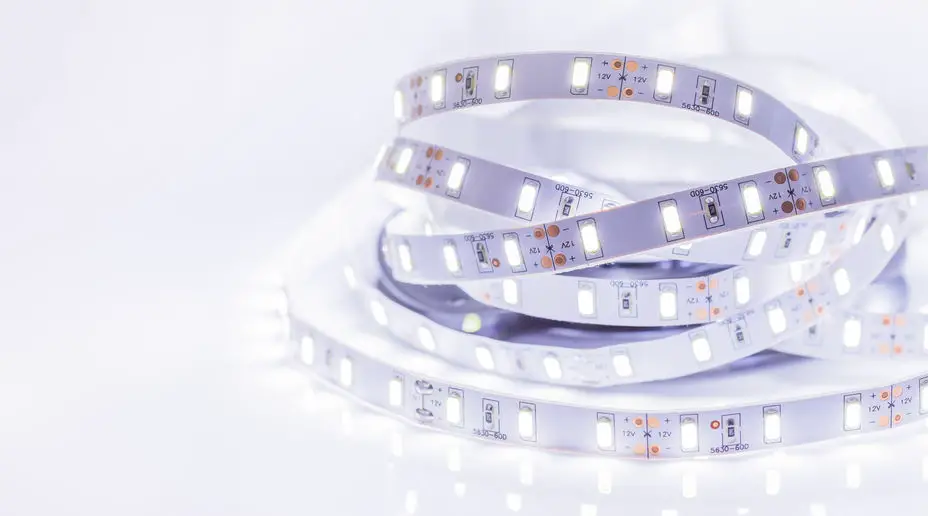What Spectrum of Light do LEDs Produce?
There are several different kinds of light sources, everything from the regular old incandescent bulb all the way to newer technology such as LED. All of these different light sources are however not born equal.
They all have unique properties aside from simply just producing light, one of them being the colours that they give off. This can also be referred to as their own individual spectrum of light.
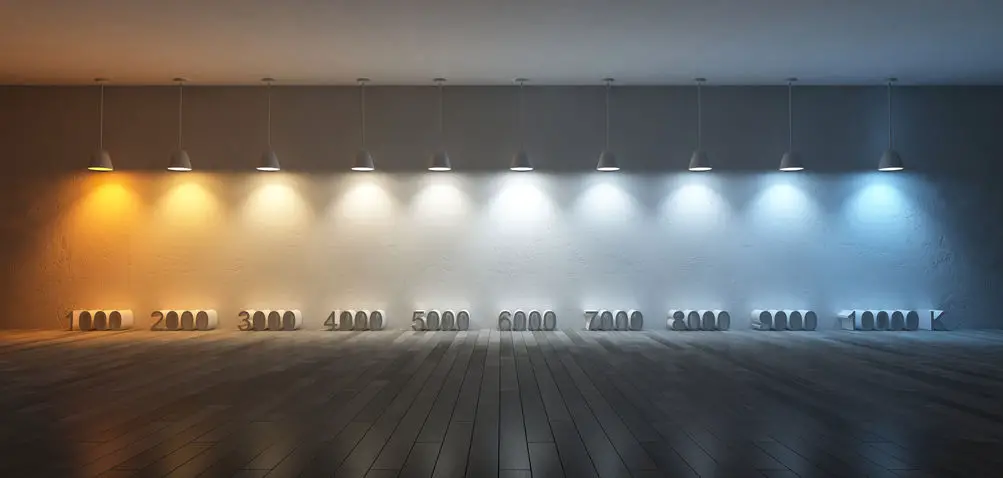
The light spectrum that LEDs give off depends on what colour temperature it has. A 3000K LED will have a different spectral distribution than a 6000K LED. A warmer 3000K LED will produce more warm colours like orange and yellow whereas a 6000K will produce mostly blue and green light in their distribution.
A fully natural LED without any additions or modifications has a light colour of around 4000K, which is why we will from now on be referring to 4000K as the base for LED light colour and therefore its light spectrum as the base form.
LEDs Spectral Distribution at 4000K
Since 4000K LED creates the very base for the spectral diagram it’s only fitting that we address that first.
The spectrum at 4000K is as can be seen in the picture below a lot on the blue side and also doesn’t give off a whole lot of red and green light. This is what makes the LED cool white since blue light is the main component for cooler lights.
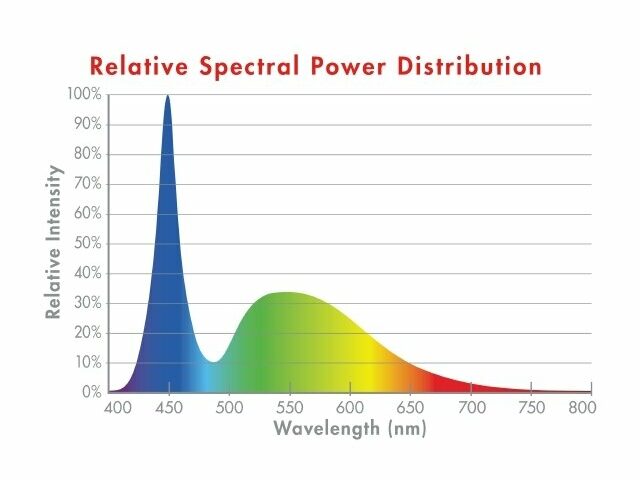
The reason why LEDs are cool white, to begin with, is that it is composed of different diodes. They are constructed in such a way which they take diodes with the colours red, green and blue (RGB) in order to create white light, which in this case just defaults at 4000K.
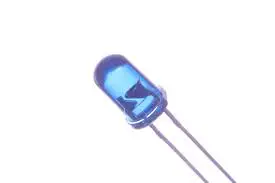
The other way LEDs are created is by using mostly (if not only) blue LED diodes and then adding a phosphor-based mixture on top of it in order to smoothen out the curve.
This is what normally causes excessively high peaks in the blue light output since that is the main light-producing component in that LED construction.
The way that even works to begin with is because when you have light in every colour, or in every wavelength like you might more accurately call it, they all converge together to form white light.
You will later on in the comparison how the diagrams differ a lot depending on the amount of blue and red they give off, which is correlated to their colour temperature.
LED spectrum at 3000K
LED’s with a colour temperature of 3000K is probably the most commonly used one after 4000K ones, mainly due to the comfortable yellow-ish hue that it gives off.
Before going into the spectrum and its details, we should first look into what makes 3000K and 4000K LEDs any different from each other. Since we already established 4000K being the base they have to have modified that in some sort of way to achieve a light colour of 3000K, right? That is correct.
What actually makes a 3000K different from a 4000K is the addition of phosphor. The way they add it is to simply apply the phosphor on top of each of the LED diodes, as demonstrated in this image.
This is a very good example of how they make use of the phosfor to make the light colour warmer. That isn’t the primary purpose of it, but when it is done this way that is the effect that it has.
The actual purpose of doing this is actually just to make the spectrum more even for the LED. This makes sense since you can see how in the 4000K diagram it has a big peak in blue but everything else is mediocre at best.

With that said, this is what actually happens when you add phosphor on top of the LED. If you want to visualize it better you could say that the phosphor causes the spectrum the LED gives off to get pushed further along to the right.
You can verify that in a way since you can see that the peak moved from the blue for the most part all the way to yellow, which is now how the light is perceived by us humans.
LED spectrum at 5000K+
Okay, now we know how warmer light temperatures are achieved, but how are the colder ones, specifically 5000K+ ones made? This is rather interesting since its different from the way you make the 3000K ones but not a lot depending on how you look at it.
The difference between them comes into play at manufacturing. In all previous light colours we have had a balance between red, green and blue diodes in order to create a white light. What you would do for anything 5000K and up though is slightly different.
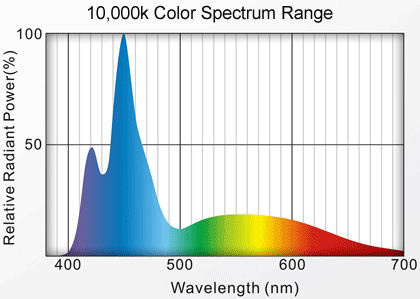
What you would do for these is to create an unbalanced LED diode on purpose. What I mean by that is that the amount and/or the intensity of the individual RGB diodes would be uneven on purpose.
Depending on how high you go in the Kelvin scale, they balance the RGB diodes in such a way that the colder you want the light to be perceived the more they favour blue in the RGB mix. In other words, they make blue and bluer hues more prevalent in the light colour by simply having it overpower the red and green the higher up you go.
This can also be done in such a way that instead of increasing the percentage of blue diodes in the RGB mixture there is another set of blue diodes added altogether, creating something new called RGBB.
The reason why RGBB would be used over pure RGB would be due to the fact that RGBB has the ability to keep the regular white light output clean.
This is because the balance of the original RGBs isn’t disrupted in an RGBB system since the extra blue is simply an addition to the original RGB system.
This is the reason why you see in the spectrum chart that blue spikes way up while red and green are rather low. This also causes the light to be perceived as very blue and makes objects look rather blue as well.
Full Spectrum LEDs
Apart from the regular LED construction, there is another type of LED which is the full spectrum LED. The full spectrum LED is constructed with the intended purpose of replicating the spectral curve of sunlight.
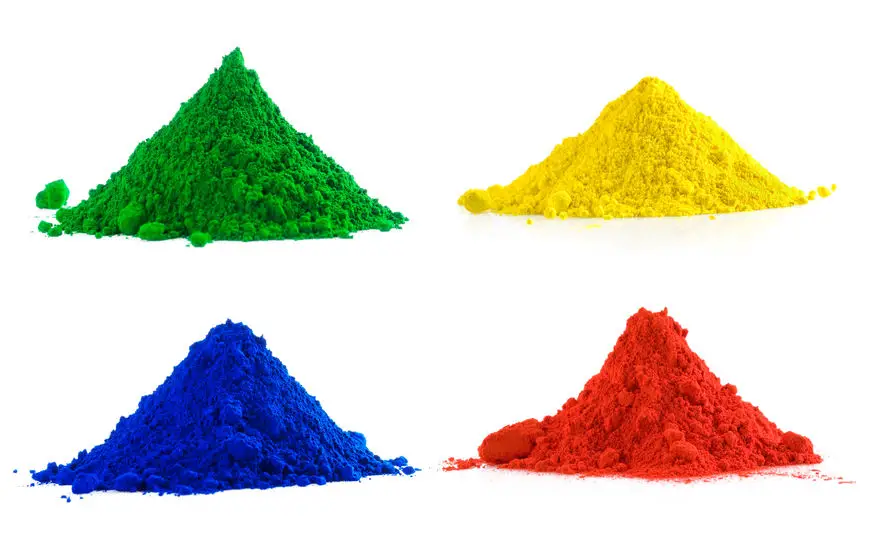
This is done by applying a phosphor mixture of varying colours instead of the more yellowish phosphor mix normally used.
This causes the LED to give off more colours than it usually would and more closely replicate the light of the sun.
The purpose of having a light source that replicates sunlight is mostly for usage within grow lights. Grow lights are lights sources that help plants grow by providing sufficient sun-like light for plants with too little or no natural sunlight.
They are mostly used within food production-based plants since good yields are rather important. However, they are also starting to find their way into home gardens due to an increased interest in home-oriented grow lights.
Comparison Between The LEDs At Different Kelvin (K)
When comparing these LED’s there isn’t an awful amount of differences however there are a few factors though that one might consider important.
The main difference between these different light sources is that they give off a light which can spark different emotions and psychological effects, meaning they are not exactly suited for the same uses.
A 3000K LED is way better suited for homes and rooms/areas where comfort is a priority whereas a 4000K LED is better suited for places where concentration and psychological awakeness is a priority, such as in an office.

In that same sense though, the use of anything 5000K+ is rather uncommon, especially in the context of interior design or anything of that matter. One common use for 10000K is for aquariums but as far as areas where it gets used in goes that’s about it.
There is one important thing to note though between 3000K and 4000K which is on the technical side of things. That is the aspect of energy efficiency when compared to the actual light output.
This is a common parameter to measure different sources of light by and you measure it in Lumen/Watt where the lumen is the “amount of light“ that a light source gives off and watt is the energy that we have put into the LED.
The interesting thing that we can note with this in mind though is that a LED with a light colour of 4000K (natural LED) will have higher efficiency (lumen/watt) than an LED with a light colour of 3000K.
This is because of the phosphor that is present in the 3000K LED. This is because the phosphor essentially swallows some of the light that the LED produces in total.
This makes sense since the phosphor is quite literally covering all of the different small diodes, which we have seen previously in the retrofit LED bulb.
Here can see an example of this put into a real scenario. This is a screenshot from a light fixture manufacturer, where you can see that we have the same energy consumed (watt) but different outputs, simply because of the change in colour temperature and phosphor levels.

As you can see the 3000K LED gets a lower lumen output because of the phosphor that blocks parts of the lumen out. It’s not a whole lot mind you, we are looking at a 5,2% difference in lumen output, but it is something to keep in mind.
Summary
Even though LEDs are traditionally cool they have the ability to produce light in any part of the visible light spectrum.
Cool LEDs are about 5% more efficient at turning energy into light due to the fact that warmer LEDs require the addition of a layer of phosphor to produce warmer light.

